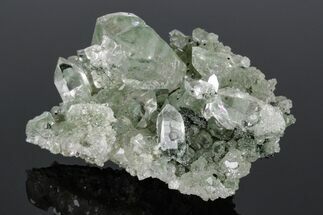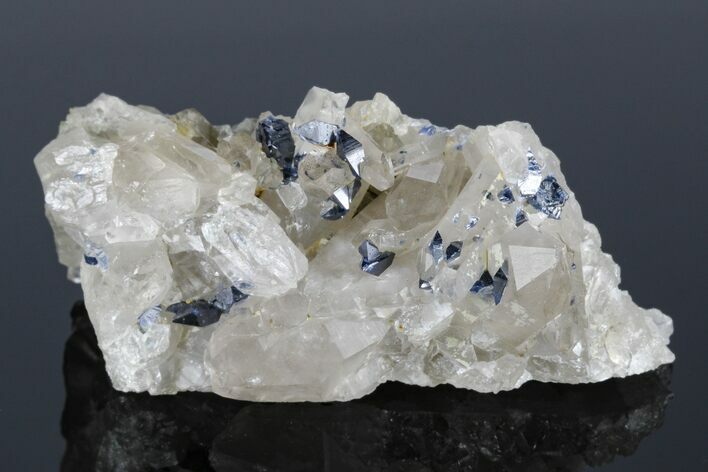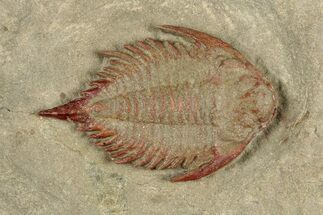This Specimen has been sold.
2.6" Quartz with Anatase Crystal Association - Hardangervidda, Norway
This interesting specimen features metallic anatase crystals that formed in association with quartz crystals. It was collected from Hardangervidda, Norway. The entire specimen measures 2.6 x 1.15" and the largest anatase crystal is about .22" long.
About Anatase
Anatase is a mineral composed of titanium dioxide that typically forms dipyramidal crystals, although variations can occur with mineral clumping. Four-pointed, X-shaped anatase crystals, while rare, have been found and are known as "X-shaped penetration twins". Horizontal striations can be seen across most anatase mineral faces and most crystals end in points, or with variations of flattening on each end. It can be found in a variety of colors, from browns and reds to greens and pinks, and can be colorless in very rare cases. However, it is most commonly black or other very dark colors due to impurities.
Anatase is a mineral composed of titanium dioxide that typically forms dipyramidal crystals, although variations can occur with mineral clumping. Four-pointed, X-shaped anatase crystals, while rare, have been found and are known as "X-shaped penetration twins". Horizontal striations can be seen across most anatase mineral faces and most crystals end in points, or with variations of flattening on each end. It can be found in a variety of colors, from browns and reds to greens and pinks, and can be colorless in very rare cases. However, it is most commonly black or other very dark colors due to impurities.
About Quartz
Quartz is the name given to silicon dioxide (SiO2) and is the second most abundant mineral in the Earth's crust. Quartz crystals generally grow in silica-rich environments--usually igneous rocks or hydrothermal environments like geothermal waters--at temperatures between 100°C and 450°C, and usually under very high pressure. In either case, crystals will precipitate as temperatures cool, just as ice gradually forms when water freezes. Quartz veins are formed when open fissures are filled with hot water during the closing stages of mountain formation: these veins can be hundreds of millions of years old.
Quartz is the name given to silicon dioxide (SiO2) and is the second most abundant mineral in the Earth's crust. Quartz crystals generally grow in silica-rich environments--usually igneous rocks or hydrothermal environments like geothermal waters--at temperatures between 100°C and 450°C, and usually under very high pressure. In either case, crystals will precipitate as temperatures cool, just as ice gradually forms when water freezes. Quartz veins are formed when open fissures are filled with hot water during the closing stages of mountain formation: these veins can be hundreds of millions of years old.
SPECIES
Anatase & Quartz
LOCATION
Hardangervidda, Norway
SIZE
2.6 x 1.15" entire specimen, .22" largest anatase crystal
CATEGORY
ITEM
#177368
 Reviews
Reviews














